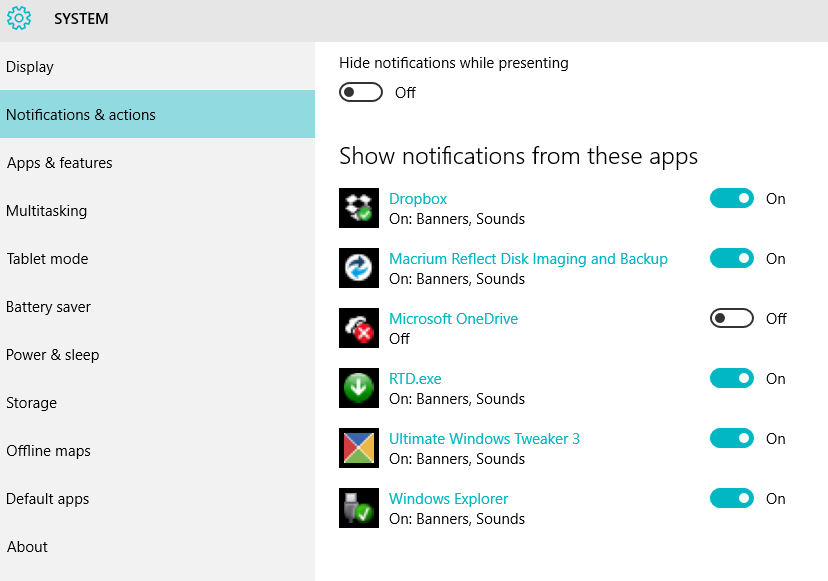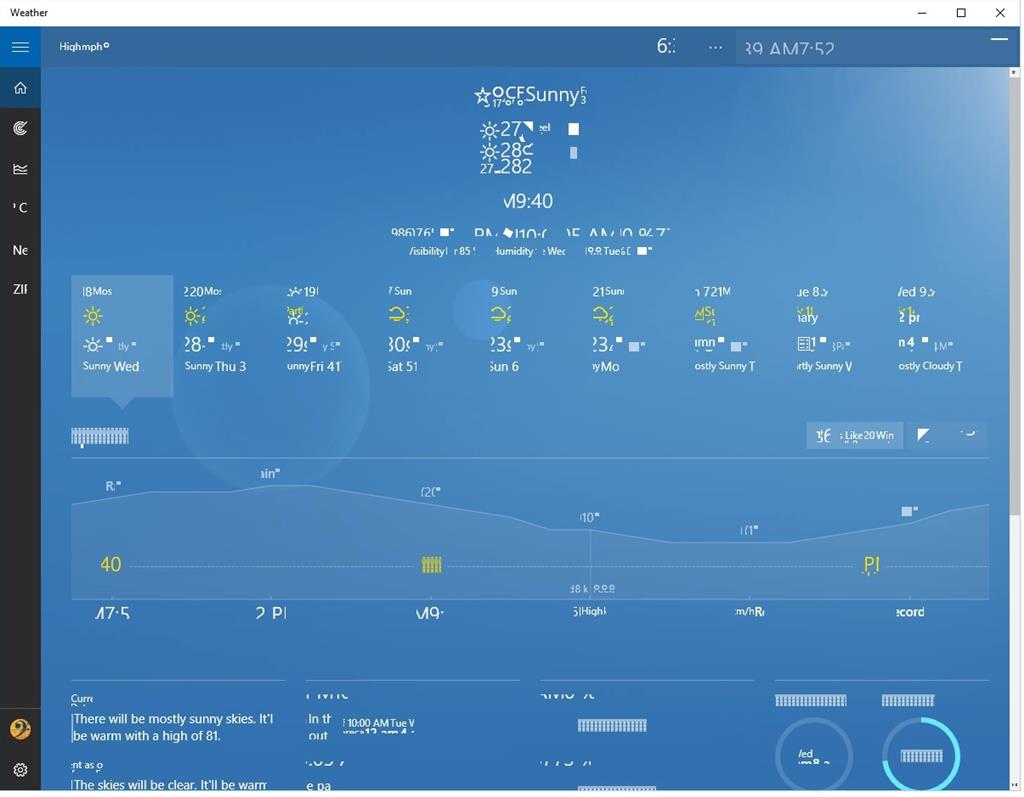Windows 10 Notifications Not Showing Up
- Windows 10 Notifications Not Showing Up Windows 7
- Windows 10 Notifications Not Showing Up On Ipad
- Missing Notifications In Action Center
How to Disable All NotificationsWindows 10’s Settings app allows you to control notifications. To launch it, open the Start menu, and then click the gear-shaped “Settings” icon—or press Windows+I.Navigate to System Notifications & Actions in the Settings window.To disable notifications for every app on your system, turn the “Get notifications from apps and other senders” toggle off.This option will disable the notifications for both Windows 10 Store apps and classic desktop apps.How to Disable Individual App NotificationsTo disable notifications for individual apps, head to System Notifications & Actions, and then scroll down to the “Get notifications from these senders” list. This list shows Windows system features, Store apps, and traditional desktop apps that can send notifications.Set an app to “Off” and Windows prevent that app from showing notifications.The above options only work for apps that use the traditional Windows notification method. Apps with custom notification bubbles continue to show their own notifications unless you close them or disable the notifications within those specific apps. Most apps that show notifications offer an option to disable them.
Solved Help Apps not appearing in 'Notifications & Actions' (self.Windows10) submitted 2 years ago. by KilltacularBatman I am trying to get notifications to work properly on my Windows 10 Home computer. I've had a periodic issue since Windows 10 was introduced with the Notification Icon in the system tray showing notifications of new mail being available in the built-in Mail application. Since the original release of Windows 10 I've had a periodic problem with the Windows Notification icon in the system tray. I use Outlook 2010 as my email client however I have the built in Windows mail client set up so that I can received email notifications as I like to quickly look at the icon to.

Windows 10 Notifications Not Showing Up Windows 7
Just open that particular app and look in its settings window for an option that disables notifications. How to Temporarily Mute NotificationsRELATED:Windows 10 has a in the, and this will be expanded upon and renamed to “Focus Assist” in the. This is essentially a “Do Not Disturb” mode for Windows 10.When Quiet Hours (or Focus Assist) is enabled, notifications are temporarily hidden. By default, when you turn Quiet Hours on, it’s enabled between midnight and 6 a.m. On the Fall Creators Update, but you’ll be able to easily customize these hours on the April 2018 Update. Head to Settings System Focus Assist to configure how it works if you’re running the new version of Windows 10.RELATED:To activate this feature, open the Action Center by clicking the Action Center icon near the bottom right corner of your taskbar or pressing Windows+A.

Click the “Quiet hours” (or “Focus assist”) tile to toggle it on or off. Select the “Expand” link at the bottom of the Action Center if you don’t see this tile in the top row.How to Disable Advertising NotificationsRELATED:Windows 10 has a lot of built-in advertising, and many of these advertisements appear as notifications.

Windows 10 Notifications Not Showing Up On Ipad
For example, you’ll sometimes see informing you about Microsoft Edge’s features and “suggestions” about features you should use. These suggestions are also notifications.You can disable all these advertisements with options built into Windows 10 itself, but Microsoft has scattered the options you’ll need across the operating system. Follow our guide to to stop Windows from pestering you with ads.How to Disable Live Tiles in the Start MenuRELATED:While live tiles aren’t traditional pop ups that interrupt you, they can certainly distract. For example, the News, Mail, and Facebook apps have live tiles, so you’ll find yourself notified with new headlines, emails, and Facebook messages every time you open.If you don’t want to see live tile notifications, just right-click or long-press a tile in your Start menu, and then select More Turn Live Tile Off. The tile remains pinned for easy access, but it just functions as a simple shortcut and isn’t constantly updated with new content.How to Disable Lock Screen NotificationsRELATED:Windows 10 also allows apps to display notifications as status messages on. If you don’t want to see status messages on your lock screen, you can remove them.To control what appears on your lock screen, head to Settings Personalization Lock screen.
Apps displaying content on your lock screen appear under “Choose an app to show detailed status” and “Choose apps to show quick status.” To remove an app from your lock screen, click its icon here, and then select the “None” option. You can also select another app, if you’d rather see another app’s notifications on your lock screen.Disable Notification Area IconsRELATED:Even after you disable notifications, many apps continue running in your “Notification Area” (also known as the System Tray). These apps often update icons here with badges and animations informing you about their status.To, just drag them onto the up arrow to the left of the icons, and then into the little panel that appears. That panel holds any Notification Area icons that you don’t want to see right on your Taskbar. (Fun fact: the official name of that panel is the Overflow Notification Pane.) The apps you drag there remain running in the background, but you won’t see their notifications on your taskbar unless you click the up arrow. You can also right-click many of these applications and close them if you don’t want them running in the background.The Settings app also allows you to customize your notification area icons. Just head to Settings Personalization Taskbar.
Missing Notifications In Action Center
In the right pane, scroll down to the “Notification Area” section, and then click the “Select which icons appear on the taskbar” link. Set any icon to “Off” and it will be hidden in that overflow panel.
This accomplishes the same thing as quickly dragging and dropping the icons from your taskbar.Windows 10 provides many more options for dealing with notifications than Windows 7 does. For example, when using Windows 7, you have to disable notifications from within each individual app you use. Windows 7 provides no way of blocking an app’s notifications at the system level, as Windows 10 does via the Settings app, nor does it provide a Quiet Hours or Focus Assist-like mode that temporarily mutes notifications.